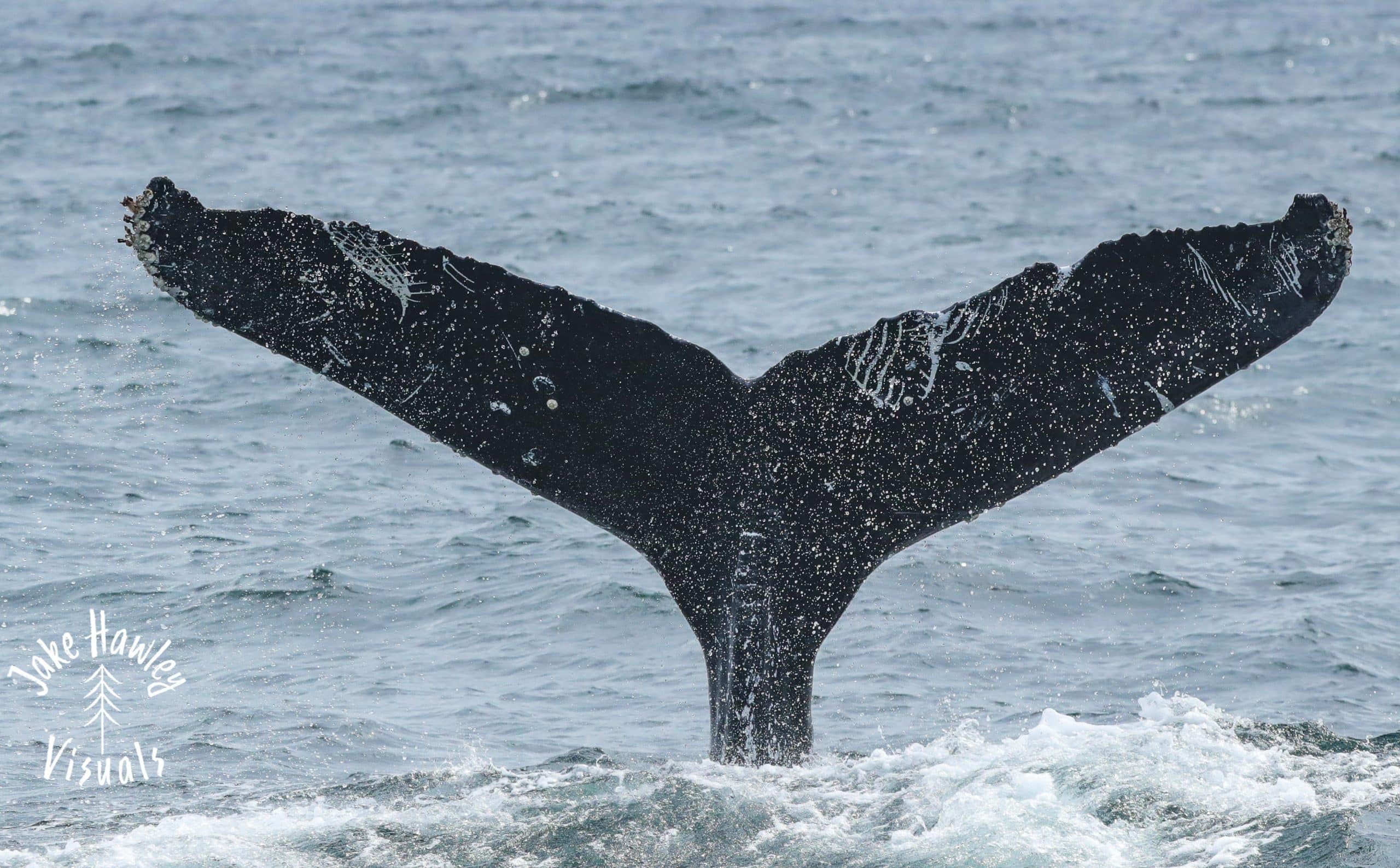Written by Jake, Marine Naturalist/Photographer/Teller of Bad Jokes
One of the things you’ll learn about on our tours is how to identify whales. Orcas have saddle patches and distinct dorsal fins, and Humpbacks have “fluke patterns” on their tail fins. We can use these to identify a whale, just like how humans use fingerprints and retinal scans in spy movies. On a whale watching tour, this does two things; 1) it provides an exciting challenge for Naturalists to match up our photos with our on board catalogs, and 2) it helps our passengers connect even further with our wildlife when they can learn the name of the whale, as well as their stories!
A prime example of this is Scuttle the humpback. This particular whale has been spotted on our tours basically every day for the past two weeks. When you see a whale this often, it becomes second nature to be able to identify them as soon as you see their features. For example, Scuttle has a small indent on his right fin that is recognizable from both behind and in front! Scuttle is unique in that his natural pattern isn’t the thing that people usually recognize first. Scuttle is a survivor of an Orca attack, and that attack has left permanent “rake marks” caused by the Orca’s teeth, and because of the unique design left behind, you can always recognize him from a distance or up close!
Speaking of up close, Scuttle has been very generous with his encounters when we’ve seen him. On a couple of occasions, he has surfaced very close to our vessels, surprising our passengers (and me, the photographer) and giving us an incredible showing by tail fluking and swimming under our boat!
Additionally, because of the patterns of our humpbacks, we’ve spent a lot of time at Race Rocks Lighthouse! The Stellar and California Sea Lions have been a favorite amongst our guests, and we’ve enjoyed sights such as territorial disputes, as well as Stellars jumping into the waters!
Last but certainly never least, we’ve been very lucky to get some rare looks at our male Elephant Seal, Bernard! He’s a massive guy, weighing in at roughly 6000 pounds. We’ve seen him flexing his nose above the surface, and have gotten some looks at his entire body out of the water as well, truly a sight to be seen!
Do you want to become the master of identifying whales? Join us on a tour of the Salish Sea to get started!









